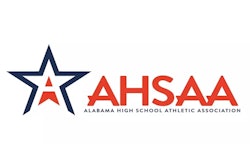
When the COVID-19 pandemic hit and schools around the country were forced to shut down their athletic programs, more than 30 colleges and universities announced that they would be cutting teams to balance their budgets. While not unexpected considering the revenue losses colleges and universities faced as a result of canceling live athletic events and in-person classes, what made this round of cuts different was that schools began to announce cuts to women’s athletic teams.
When Stanford University revealed July 8, 2020, that it planned to cut 11 sports, five of them were women’s teams. Then, this past May, Stanford announced that all 11 programs would continue to compete for the Cardinal, but it took the promise of additional funding and — perhaps more importantly — the threat of lawsuits to change administrators’ minds.
Since the passage of Title IX in 1972, schools have often chosen to cut only men’s athletic teams to come into or remain in compliance with the law. By including women’s sports teams on the list of programs to be cut, schools risk noncompliance and subject themselves to potential Title IX lawsuits. Stanford ultimately averted legal action, but a good example of a case centered on women’s sports elimination that reached the level of court review is Lazor v. University of Connecticut, 2021 U.S. Dist. LEXIS 99490.
Rowers’ revolt
On June 24, 2020, two weeks before Stanford announced its initial intention to slash its sports offerings, the University of Connecticut said that it would be cutting four sports — women’s rowing, men’s cross country, men’s tennis, and men’s swimming and diving — at the end of the 2020-21 academic year for budgetary reasons. UConn argued that because the athletic department faced an estimated $43.5 million deficit due to the pandemic, it needed to eliminate the four programs while mandating a 15 percent cut in the operating budget of all sports and cutting some scholarships.
When the cuts were announced, a group of athletes on the women’s rowing team sued the university seeking a temporary restraining order. In particular, the women argued that UConn’s decision to eliminate the rowing team violated Title IX of the Educational Amendments Act of 1972.
To prevail on a motion for a temporary restraining order, the court held that the women had to demonstrate: 1) that they were likely to succeed on the merits, 2) that they were likely to suffer irreparable harm in the absence of preliminary relief, 3) that the balance of equities tipped in their favor, and 4) that an injunction was in the public interest.
Substantial likelihood of success on the merits. Title IX provides, in relevant part, that “[n]o person in the United States shall, on the basis of sex, be excluded from participation in, be denied the benefits of, or be subjected to discrimination under any education program or activity receiving Federal financial assistance” 20 U.S.C. §1681(a).
In evaluating whether UConn was in compliance with Title IX, the court applied the established three-prong test: 1) whether intercollegiate-level participation opportunities for male and female students are provided in numbers substantially proportionate to their respective enrollments, 2) whether the institution can show a history and continuing practice of program expansion which is demonstrably responsive to the developing interest and abilities of the members of the underrepresented sex, or 3) whether it can be demonstrated that the interests and abilities of the members of that sex have been fully and effectively accommodated by the present program.
To satisfy Title IX, a college or university only has to satisfy one of the three prongs. Since UConn argued that it satisfied the first prong, the court only focused on that prong of the test.
Under that prong, a court must first determine the number of participation opportunities afforded to male and female athletes in the intercollegiate athletic program, then consider whether the numbers are substantially proportionate to each sex’s undergraduate enrollment.
While the court noted that Title IX does not require exact proportionality — since it may be unreasonably difficult for an institution to achieve exact proportionality due to, for instance, “natural fluctuations in enrollment and participation rates” — the participation opportunities for each sex must remain “substantially proportionate.” According to the court, athletic opportunities are substantially proportionate at a university when the number of opportunities required to achieve exact proportionality would not be sufficient to sustain a viable team — that is, one with a sufficient number of interested and able students, as well as enough available intercollegiate competition.
According to UConn, because the average size of women’s teams at the school for the 2020-21 academic year was greater than what it contended was the participation gap, the university fell squarely within the first prong’s safe harbor.
In rejecting UConn’s argument, the court held that as a preliminary matter, the women rowers acting as plaintiffs in the case have shown that it is substantially likely that UConn is not presently in compliance with Title IX’s effective-accommodation mandate, and that cutting the women’s rowing team would only exacerbate that noncompliance by magnifying UConn’s disparity in athletic participation opportunities. Relying on UConn’s numbers alone, the adjusted participation gap for 2020-21 following the cut of the women’s rowing team would be 22 — meaning that the participation gap for the 2020-21 academic year would increase by two. The plaintiffs thus demonstrated a substantial likelihood of prevailing on their Title IX claim that UConn fails to afford female students varsity athletic participation opportunities substantially proportionate to their enrollment.
Irreparable harm. The plaintiffs also established that they would likely suffer irreparable harm in the absence of a temporary restraining order. Put simply, the women rowers in this case are high-level college athletes. Many of them have vigorously trained throughout their formative high school years in order to compete on a Division I team. If the women’s rowing team at UConn were eliminated, the plaintiffs would lose the long-sought opportunity to compete at the highest level of intercollegiate athletics. Even if there was an opportunity to transfer to another school to compete on a Division I team, the plaintiffs would face an interruption in competition and would be forced to break into new programs with new coaches, which could hinder the plaintiffs’ development as rowers.
Rowing at UConn, moreover, has been a central part of the plaintiffs’ lives, and has brought about immeasurable mental and physical health benefits. There is a sense of community on the team, with the coaches serving as vital mentors. Neither the continuation of their scholarships, nor any monetary sum, could repair the harm the plaintiffs would suffer if those intangible benefits were lost, they argued.
Balancing of equities. The third point examined by the court, balancing of equities, also tipped in favor of the plaintiffs in this case. Aside from the conclusory assertion that there was “no time” to prepare for another rowing season, UConn did not describe any harm that it would sustain by continuing the team until a hearing on the motion for a preliminary injunction could be conducted. If anything, the hardship would be solely financial and thus could be compensated if it was later determined that a preliminary injunction should not issue.
By contrast, it is likely that nothing would be left of the women’s rowing team if not for the issuance of a temporary restraining order: more team members would transfer, coaches would have to secure positions elsewhere, and recruiting would cease. With each passing day, the plaintiffs would lose the opportunity to develop as student-athletes. This point, therefore, weighed in favor of granting a temporary restraining order.
Public interest. The final question that the court considered was whether the issuance of a temporary restraining order would serve the public interest. In this case, the public interest lies in vindicating the plaintiffs’ civil rights as guaranteed under Title IX, which would only be furthered by a temporary restraining order. In support of this conclusion, the court cited numerous cases that found that the public interest is best served by upholding the goals of Title IX. Accordingly, the public interest, like the other three points reviewed by the court, weighed in favor of a temporary restraining order.
Oars in the water again
With the athletes having shown that they would suffer irreparable harm in the absence of a temporary restraining order and that they enjoyed a substantial likelihood of success on the merits of their claim, the court enjoined UConn from eliminating the women’s rowing team until the issue could be fully litigated.
Faced with the prospect of protracted litigation, the University of Connecticut announced July 21, 2021, that it would reinstate its women’s rowing program for at least the next two years.
What can college administrators learn from the case? First, eliminating women’s sports for budgetary reasons is never going to be a valid reason for violating Title IX. Second, it is essential that athletic departments conduct annual audits of their athletic programs. In this case, the court relied heavily on athletic department data in determining an institution’s Title IX compliance as it pertains to athletics. In addition, inflating team roster numbers, as UConn did with the women’s rowing team, is never a smart idea. If presented in court, the court will always see through the inflated numbers and rule in favor of the students.




































